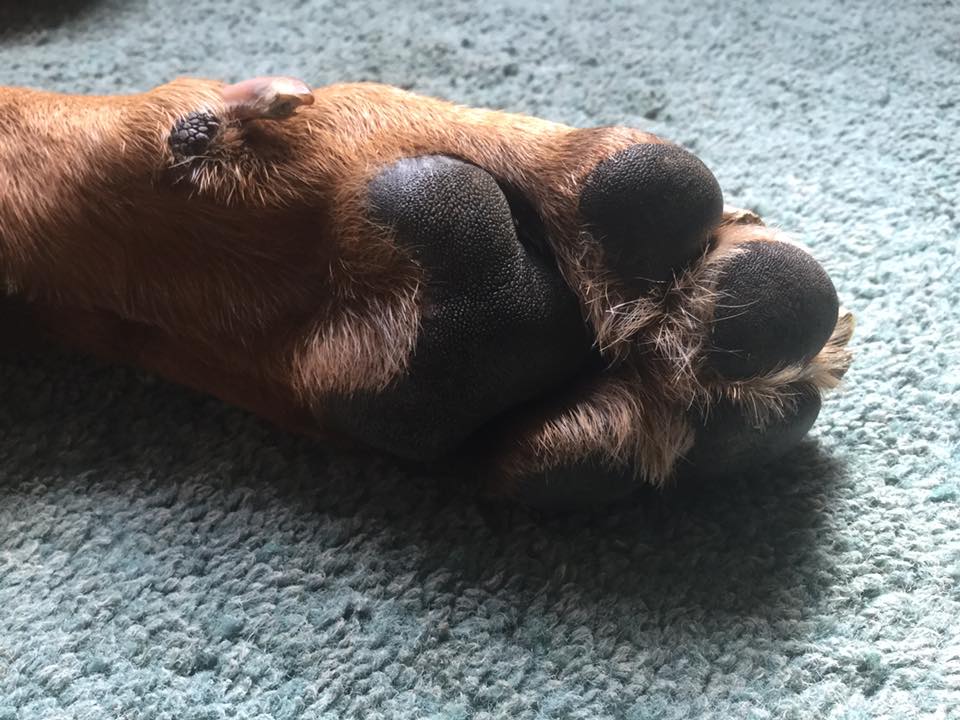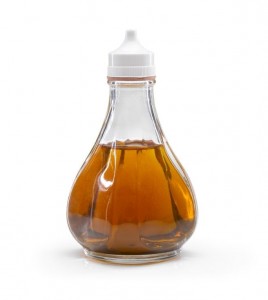OK, that sounds like a scary medical term, so what exactly are interdigital cysts?
In actual fact, the correct term for this problem is Interdigital Furunculosis and you may hear it referred to that way but generally speaking the word cyst is used instead.
If we break the term down into its component parts, we have inter (meaning between), digital (meaning toes or fingers) and cysts being a closed, bladder-like sac formed in animal tissues, containing fluid or semifluid matter.
Therefore, we are simply talking about a fluid-filled lump between the toes which is usually found on the webbing between. These cysts can be incredibly painful for your dog causing discomfort, irritation and limping as the cyst increases in size and occasionally, rupture or discharge their fluid.
Causes:
There are many possible causes for this problem and if its the first time it has happened, have a look around to see if there is anything different in your dog’s surroundings starting with allergies to anything from carpet freshener to even the friction of walking on a new crate tray. Other triggers include excess weight, poor foot conformation, mites, foreign objects, ingrowing hairs and yeast infections. Some vets even think that a cyst could really be a fungus that forms between the toes.
Although they are hard to prevent, proper treatment and a good paw exam after each walk should help keep cysts in check. You are looking for any puncture marks that could have arisen on their walk indicating a foreign body or cut, or any unusual substance on their pads. Clean the area thoroughly and watch for any signs of allergies or paw nibbling.
While any breed of dog can experience interdigital cysts, Labradors, Bulldogs, allergy-prone and short-haired varieties are more susceptible along with overweight/obese dogs.
Treatment:
To start with, and if you know that this is definitely the condition you are dealing with, I would start with filling the bath with a couple of inches of warm water with Epsom Salts in to soak the paw (for about 10 minutes 3-4 times per day). Hopefully, after a couple of days you should start to see some improvement in the severity of the cyst.
If not, then your first port of call should really be your vet for a medicated cream such as a combination of antipruritic, antimicrobial, antifungal, and corticosteroid to treat infections and skin disorders caused by bacterial or candidal infections. It is necessary as a rule to use a systemic medication, ie treating the whole of the body, and this can be with either oral or injectable medications. If your vet thinks there could be an allergic trigger to the cyst, he may decide to prescribe an antihistamine for your dog too.
Usually, the infection will respond really well to the medication but it can recur very quickly. Its a good idea to treat these infections with an extended course of antibiotics, perhaps for as long as 6-8 weeks to really get to the bottom of it. Even then, in some cases it may be necessary to return to the treatment every so often and more infrequently still, it may be used continually to control some stubborn conditions.
On top of the medication your vet will prescribe for you, and as suggested above, it can be very beneficial to soak your dog’s paws in warm Epsom Salts for around 10 minutes, 3-4 times per day. Remember to pat the area dry when you have finished soaking and don’t let Rover drink any while he’s marinating!!!
If after several weeks of treatment you are getting to the end of your tether with the constant pills, bathing, buster collars and general unpleasantness of the whole thing, it is tempting to try to look for a “quick fix” such as simply removing the whole cyst and the webbing itself between the toes. Tempting as this is, this will not address the underlying problem. It is important to remember before going down such an invasive route that removal of the webbing between the toes will degrade the integrity of the entire foot forever. A strategy of perhaps going for a biopsy or needle aspirate of the cyst itself will allow your vet to send the sample off to pathology and determine the cause. Once you have the cause, you can hopefully avoid this condition recurring in the future.
Natural Remedies to Help:
It is important that we try to get to the underlying trigger of the cyst as without this, there is a high likelihood that the cyst will return or may reappear on another toe. However, in the mean time, you can also try the following remedies:
Apple Cider Vinegar is amazing stuff in all kinds of health ways and you can try rinsing the paws with a dilute solution of apple cider vinegar. Please remember that this does sting so if the sores are oozing or open, then it is essential to make the solution VERY dilute indeed – I’m sure you know how it feels if you are eating salt and vinegar crisps and you get a little seasoning on a cut on your finger!
Still sticking with the apple cider vinegar and thinking from a systemic approach, it is also something you could try adding to their food or water (not all dog’s like the taste however!!)
You could try applying Manuka honey to the sore should you be able to police the wound and stop your furry friend from simply licking it off or you might try Colloidal Silver, adding a few drops to the sores a couple of times a day.
Please remember that interdigital cysts can be quite stubborn and a vet opinion should be sought rather than allowing such a painful condition to continue for any length of time.




